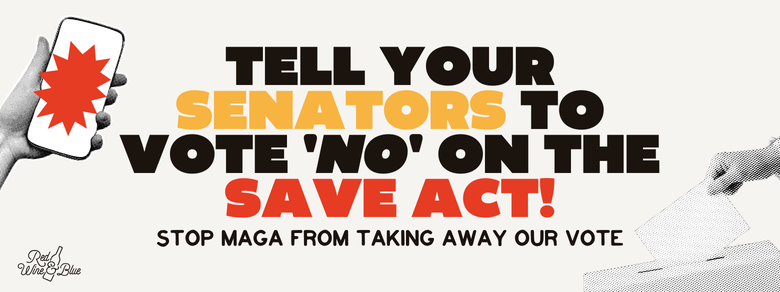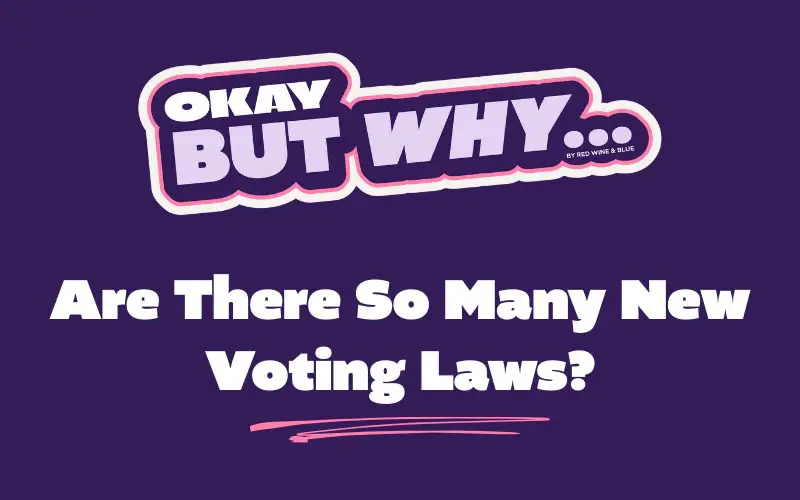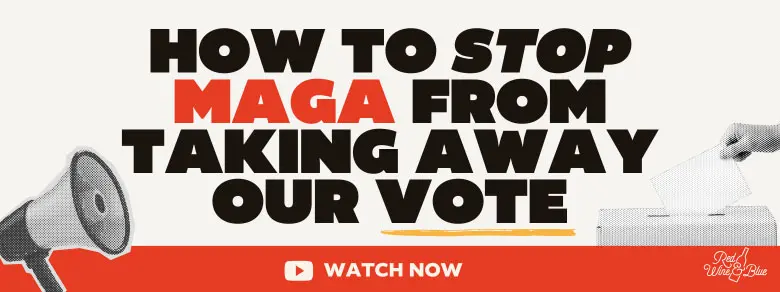
Our Voting Rights Are Under Attack
Extremists across the country are coming for our right to vote. Why? Because they know that their agenda is so wildly unpopular with the majority of Americans that people will never support them. Since they can’t win on their own, they’ve decided to cut people out of the process by trying to pass laws to prevent people – especially people of color, LGBTQ+ people, and women – from being able to vote. But voting rights are not a Republican or Democrat issue. We all want fair elections where everyone is able to vote.
Call Your Senators About the SAVE Act
Use our calling tool to make your calls today.
Current Threat to our Voting Rights
The U.S. House just passed the SAVE Act and the Senate will vote on it soon. Supporters say it’s for “election security,” but really it’s an assault on the voting rights of women, immigrants, LGBTQ+ people, Black people, and other marginalized communities. The SAVE Act is a voter suppression bill. Period.
The SAVE Act would require anyone registering to vote, or even just updating their voter registration, to show proof of citizenship (a passport or a birth certificate that matches their current last name), in person. What’s wrong with that? A few things.
For starters, there is very little evidence of voter fraud anywhere. The Washington Post showed only 4 cases out of 135 million ballots in the 2016 elections. President Trump’s own commission investigating the 2016 elections ended after showing no proof.
To make matters worse, an estimated 21 million Americans don’t have a passport or copy of their birth certificate handy, and the 80% of married women who have taken their spouse’s last name — 69 million women — rarely update their birth certificates to match. The SAVE Act would impact tens of millions of us.
The good news is MAGA can’t pass the SAVE Act alone. It passed the House but will take 60 votes to pass the Senate. We can make sure it’s dead on arrival by sharing this information with everyone we know, and by calling our Senators today. We make it easy for you to do both!
This isn’t new.
Learn more about America’s history of voter suppression by checking out our “Okay, But Why?” series on voting laws.
Our Voting Rights Today
The 1965 Voting Rights Act established a process called “preclearance” where the federal government would review all new voting laws in states that had a documented history of racial discrimination. This protected everyone across the country from voter suppression and led to a surge in new Black voters. A quarter of a million new Black voters registered by the end of the year!
But in 2013, the U.S. Supreme Court ended that process, ruling in Shelby County v. Holder that racism was no longer an issue, so preclearance was unconstitutional. After getting this greenlight from the Supreme Court, states immediately started introducing new voter suppression laws.
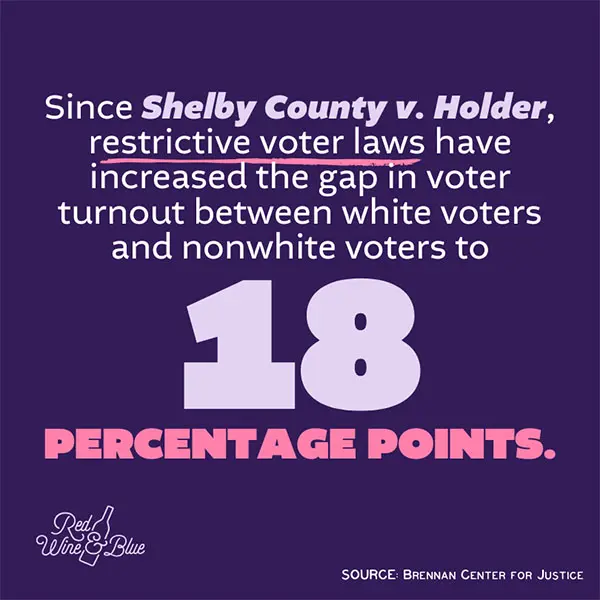
Since Shelby, 29 states have passed 94 new laws making it harder for people to vote. At least 1/3 of those laws likely would’ve been prevented if Shelby hadn’t overturned parts of the Voting Rights Act. And the gap in turnout rates between white voters and voters of color has grown since the decision, from 13 percentage points in 2010 to 18 points in 2022. The gap between white voters and Black voters grew 8 percentage points to 16 points, and the gap between white voters and Latino voters grew to 22 points.
After the 2020 election, 440 voter restriction bills were introduced nationwide. This included a wave of bills targeting mail-in voting, which grew during the Covid-19 pandemic and led to an increase in voter turnout. In 2023 alone, 356 restrictive voting bills were introduced.
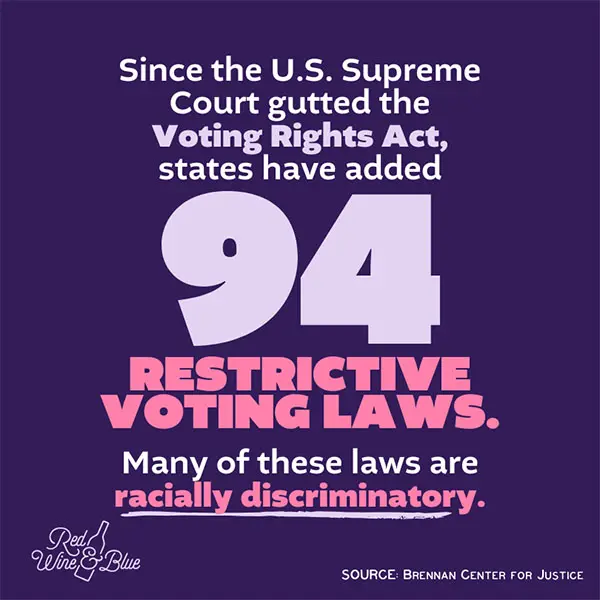
How Extremists Take Away Voting Rights
We know why extremists don’t want us to vote — because if we do, they won’t win! But what are they doing exactly to keep us from the ballot box? There are many different ways they can take away our voting rights, mostly through restrictive policies and voting laws. Here are some examples:
Laws requiring an approved voter ID
More than 21 million Americans don’t have a qualifying ID to vote, including 25% of voting-age Black Americans. It’s been proven that voter ID laws disproportionately harm voters of color. Black and Native Americans are less likely than white Americans to have a qualifying ID.
Voter ID laws also harm other groups like students, elderly, rural residents, people with disabilities, and low-income voters because it is harder for them to take the time off work or school, travel, and pay for the ID.
People with disabilities are less likely to have a driver’s license, and students are less likely to have an ID with their current address.
Laws restricting and criminalizing voter assistance, like handing out water to voters waiting in line
Some even target poll workers!
Data shows that voters of color — and polling places with fewer white voters — face longer lines and wait times during voting, so they would benefit more from this kind of assistance. And racism in the criminal justice system leads to people of color being more likely to be harmed by these laws.
Restricting who can hold voter registration drives and how they’re run
Voter registration drives have a history of helping young, low-income, and minority voters register to vote, and these are groups extremists are trying to stop from voting.
Limiting the length of voter registration periods and early voting periods
Limiting, reducing, or closing polling locations
Studies have shown that voters of color are more impacted by consolidation of polling places, and that counties with larger minority populations have few polling locations.
Native American voters are more geographically isolated and have to travel farther to get to polling sites.
Two-thirds of polling places had at least one impediment to voters with disabilities in a 2016 study, and 18% of voters with disabilities reported difficulties voting in person in 2020.
Ending or restricting mail-in voting
Voting by mail makes it easier to vote for people who travel a lot, have health needs or disabilities, transportation challenges, or job conflicts. Restrictions on mail-in voting have been shown to have racially discriminatory impact.
“Purging” (removing voters from) voter rolls
Drawing unfair voting districts to favor a certain party (aka gerrymandering)
Putting additional restrictions on voters with criminal records, even after their sentences have been served (felony disenfranchisement)
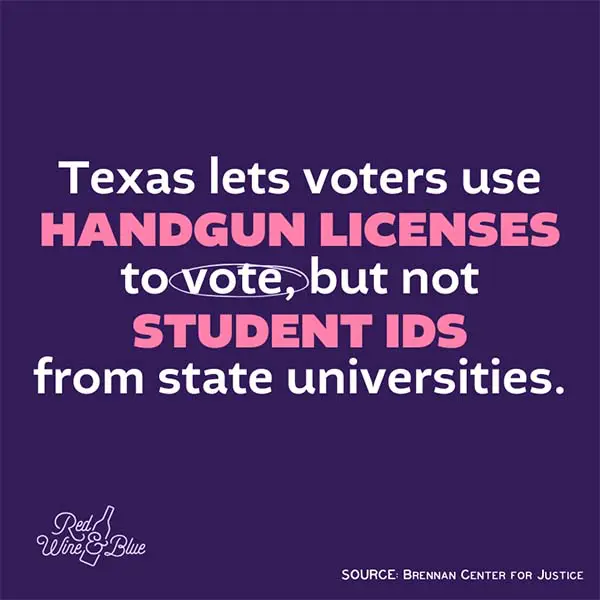
Federal Threats to Our Voting Rights
Most of these voter suppression laws happen at the state level, but we’re also facing federal attempts to suppress voters, like with the SAVE Act.
Wendy Weiser from The Brennan Center for Justice told us in our event, “How to Stop MAGA from Taking Away Our Vote”, that Congress has never passed a law that restricts voting rights like the SAVE Act would. And that’s saying a lot given America’s history of voter suppression!
These efforts could take away voting rights from tens of thousands of married women, immigrants, transgender people, and new voters.
Warn Everyone you know about the SAVE Act!
Help us reach more people with this information. Share these posts to spread the word!

